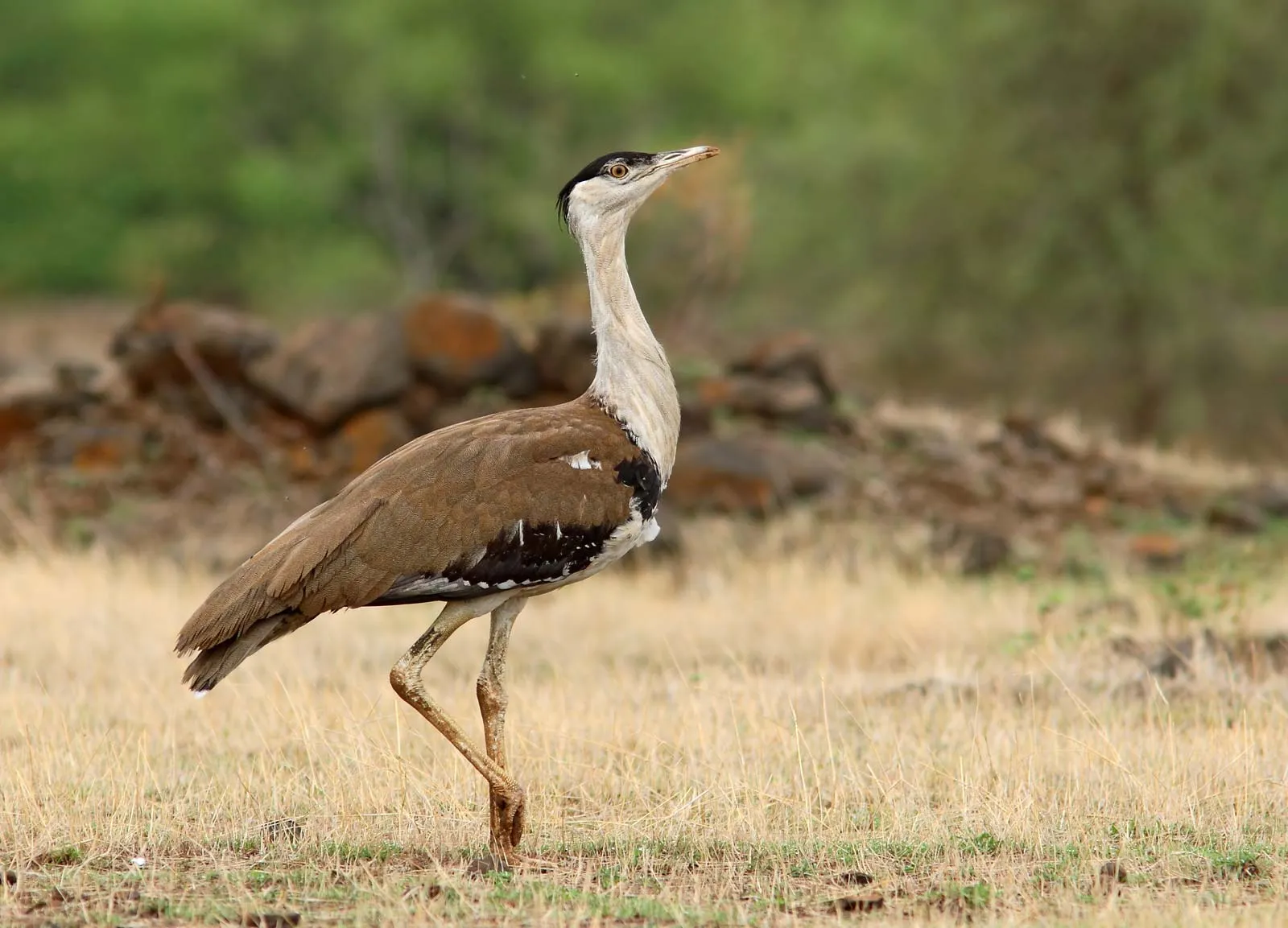
Great Indian Bustard
Ardeotis nigriceps
Order:
Family:
Size:
90 to 120 centimeters (35 to 47 inches)
Weight:
10 to 16 kilograms (22 to 35 pounds)
Taxonomy:
(Vigors, 1831)
Short Description:
The Great Indian Bustard is a large and impressive bird with a distinctive appearance. It has a robust body, long neck, and relatively short legs. The plumage of adults is predominantly sandy brown with intricate black and white markings, providing excellent camouflage in its habitat. Males have a black crown on the head, while females have a lighter crown with brown streaks.
Far far away, behind the word mountains, far from the countries Vokalia and Consonantia, there live the blind texts. Separated they live in Bookmarksgrove right at the coast
In Pakistan, the Great Indian Bustard is primarily found in the arid and semi-arid regions, including areas such as Balochistan, Sindh, and parts of Punjab. Its distribution in Pakistan is limited and fragmented due to habitat loss and degradation.
Great Indian Bustards are often solitary birds or found in small groups, foraging on the ground for insects, seeds, and other small invertebrates. They are well adapted to arid conditions and can endure long periods without water. During the breeding season, which typically occurs from spring to summer, males perform elaborate courtship displays, including inflating their throat sac and displaying their long tail feathers to attract females. Females lay their eggs in shallow scrapes on the ground, usually concealed among vegetation or rocks. The species is known for its strong and direct flight, with rapid wing beats and gliding.
Far far away, behind the word mountains, far from the countries Vokalia and Consonantia, there live the blind texts. Separated they live in Bookmarksgrove right at the coast
About Photographer : Hello World
Facebook
Twitter
Instagram
Flicker
LinkedIn


